Distance Variables

Wind Speed
Increase or decrease the yardage by 1% for every mile per hour of wind speed. So a 10 MPH headwind @ 150 actual yards distance would relate to 165 yards, a tailwind could be as much as 135 distance club. A crosswind can easily double the distance of your slice or hook, turning a 20-yard miss into a 40-yard disaster. If you tend to hit the ball very high, so wind tends to affect your shots more than a golfer who hits the ball low
Elevation
The rule of thumb is every 10 yards of up elevation add one club length, likewise decrease on a down elevation.
The ball above feet goes left, and for left-handers go Right.
The ball below the feet goes right, and for left-handers go left.
Uphill lie changes loft, adjust by increasing club and body adjust to the slope.
Down the lower loft, adjust by changing club one less club and adjust the body to the slope
At Higher Elevations, subtracts 20 percent to calculate yardage in altitudes above 3,000 feet. So, If he has 200 yards to the pin, then deducting 20%, he would hit a club equivalent to his or her 160 yards at sea level yardage shot. It even gets more difficult the higher the elevation. This is the reason you may want multiple accuracy cards due to the huge club difference from sea level to your course level or mountain.
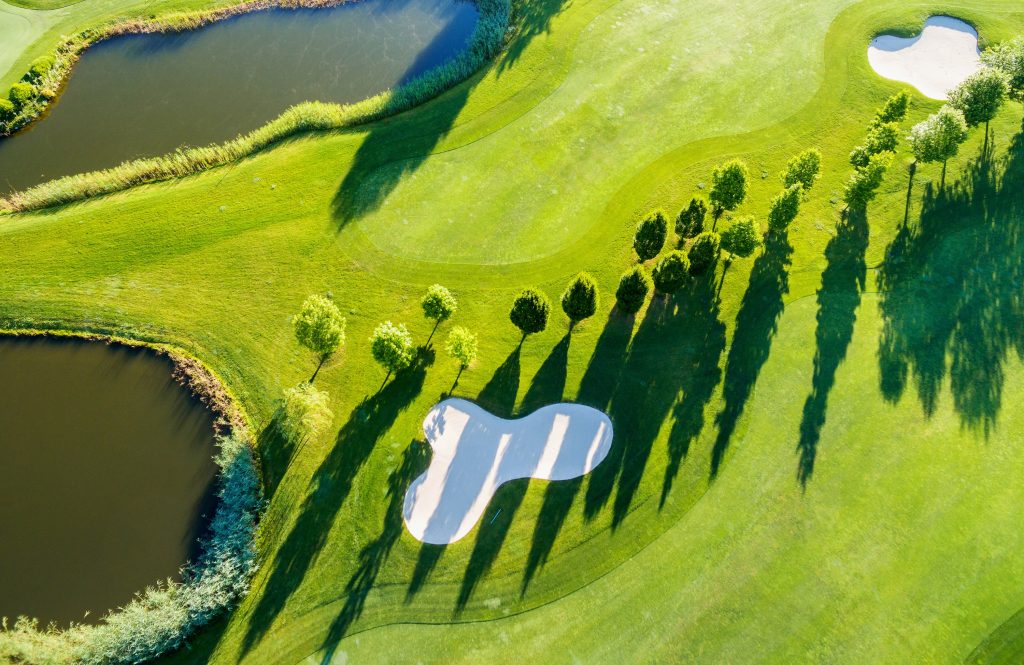
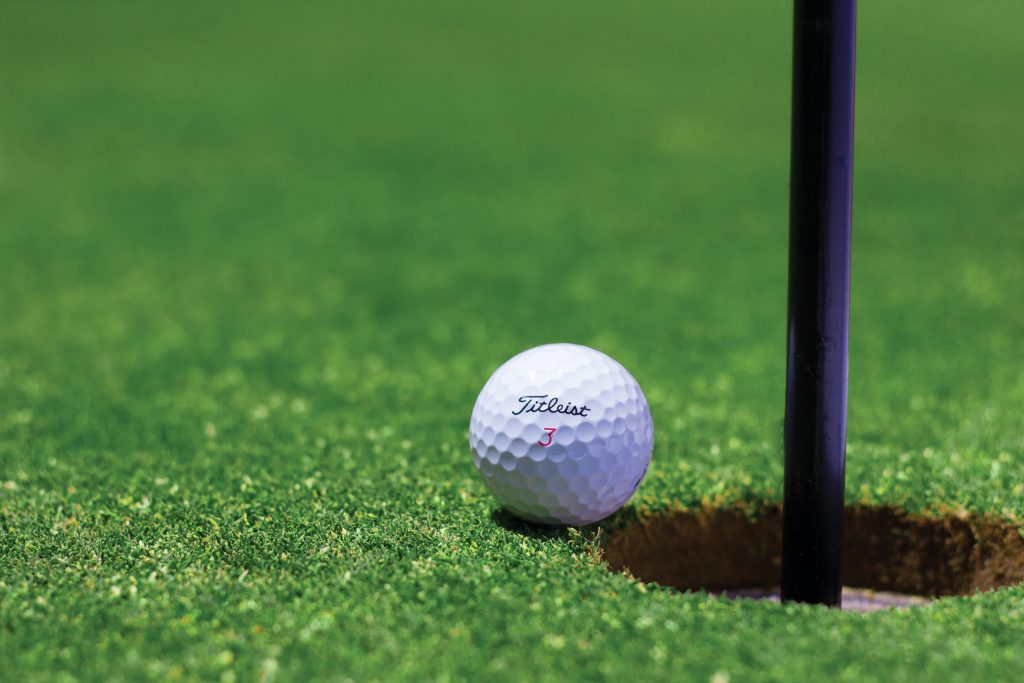
Golf Ball
Golf balls do make a difference. Being consistent with the same ball will add to your accuracy. Ball distance can vary from 5, 10, or 15 yards.
Sticker Symbols
Imagine having removable mini stickers to help fine-tune your distance and fractional distance, Include distance info you DEEM CRITICAL ON THE INCLUDED x 2 ACCURACY CARDS or the actual golf club. Distance is known for each club, players guide of Club Carry distance, Roll, and fractional distances. Easily replaced to update your distance card.
.


Best Way to Lower Score
Work backward and hit your ideal approach distance. Hit the club you know how to hit best to GIOTG “Get it on the green”
The ball above feet goes left, and for left-handers goes Right.
The ball below the feet goes right, and for left-handers goes left.
Uphill lie changes loft, adjust by increasing club and body adjust to the slope.
Downhill lower loft, adjust by changing club one less club and adjust the body to the slope
Golf is a game of Missing
Green in Regulation (GIR): A green is considered a hit in regulation if any part of the ball is touching the putting surface after the player has taken at least two fewer strokes than par for that hole. For instance, regulation on a par 3 is one stroke; on a par 4, two strokes or fewer. Scratch golfers hit GIR 69% of the time. That’s only 12 greens. If you have a 20 handicap you are only hitting 1 green in regulation. The only way to improve is to Know Your Distance. Just think hitting 3 GIR, now your hitting in the high 80’s. And every time you improve by 2 GIR you knock off 5 strokes. It is not how far you can hit, Simply just KNOWYOURDISTANCE.COM
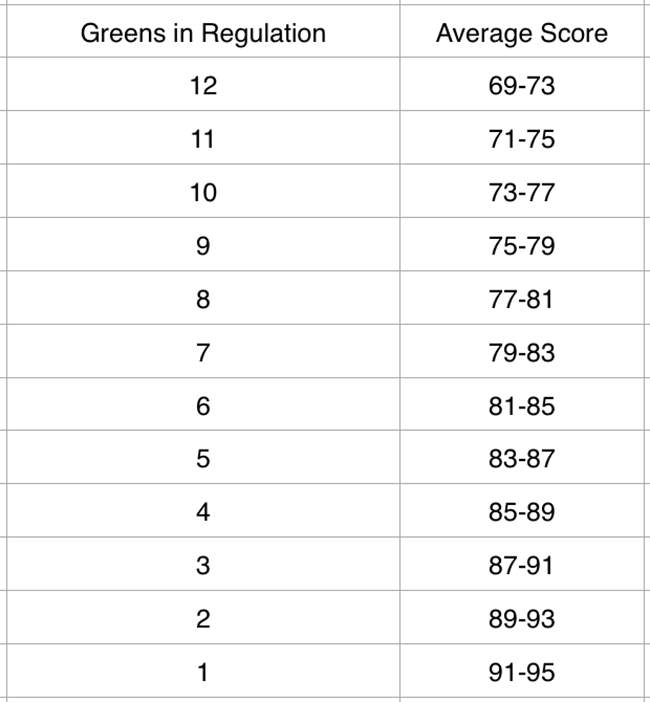
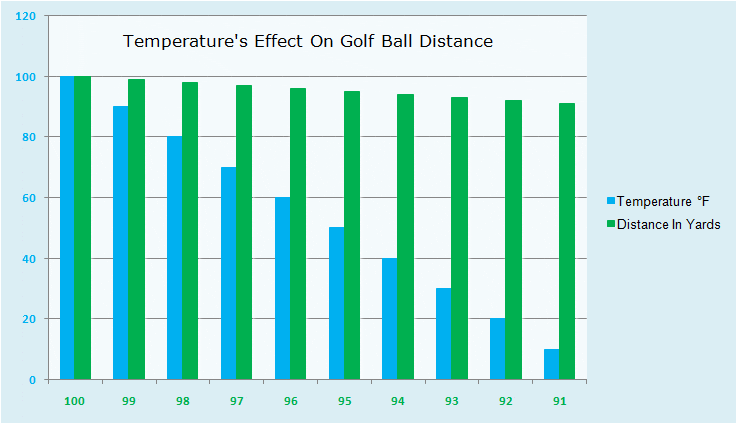
How Much Does Your Golf Ball’s Temperature and Cold Weather Affect Ball Distance
Colder weather and cold golf balls result in a decrease in golf ball travel distance. When the temperature decreases by 20°F you can expect a 1 – 2 yard decrease in distance for every 100 yards in a shot. The colder your balls are, the shorter your shot will measure up. So, at 60 degrees expect to lose 4 yards per 100 yards of carry.
MEMBERS WORKSHEET BASICS 90-day free trial here
Members can edit every column. Know your basic distances and fractional distances for each club. Start your membership by picking one of the 8 pages and entering your guestimate, then on the range start adjusting- Distance, Ball positioning is critical for each club by being off just 1″ inch, you can be much as 10 yards left or right of the target. As you progress you may want to add other notes. Below are the member-edited columns each can be edited for Club Gapping or Course Mapping along with many other member edits.
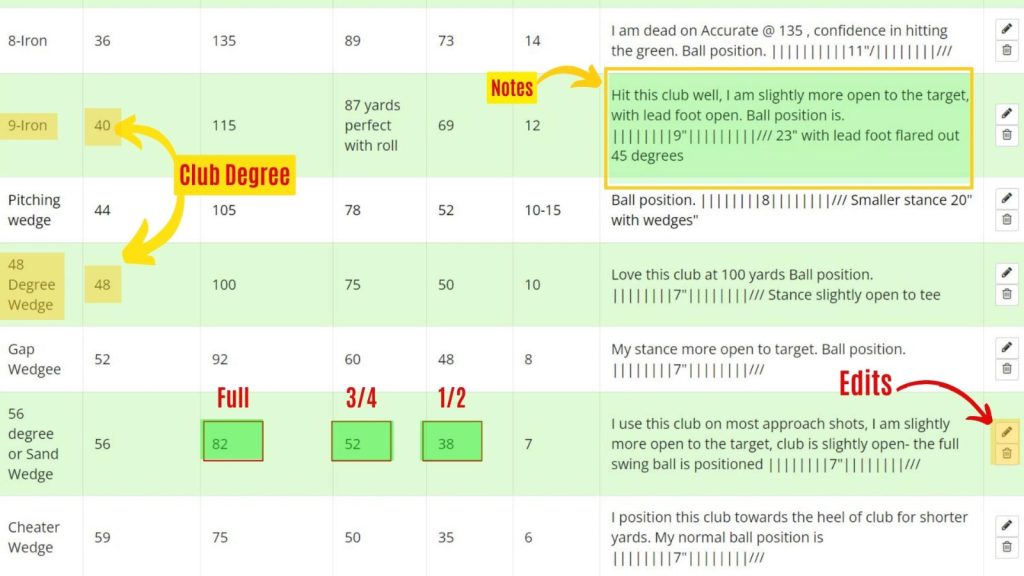
Gapping You Golf Clubs
Gapping your clubs is an important aspect of your golf game. It refers to the distance between each club in your bag and ensuring no significant gaps in yardage between them. To properly gap your clubs, you should first determine your average distance for each club. This can be done by hitting a series of shots with each club and taking note of the average distance. Once you have your average distances, you can then adjust your club selection to ensure that there are no significant gaps in yardage between clubs. For example, if you find that there is a large gap between your 7-iron and 8-iron, you may want to consider adding a club that fills that gap, such as a 7-wood or hybrid. It’s important to note that gapping your clubs can be a complex process and it’s best to seek the advice of a golf teaching professional. They can help you determine the best club selection for your game and ensure that your clubs are properly gapped.
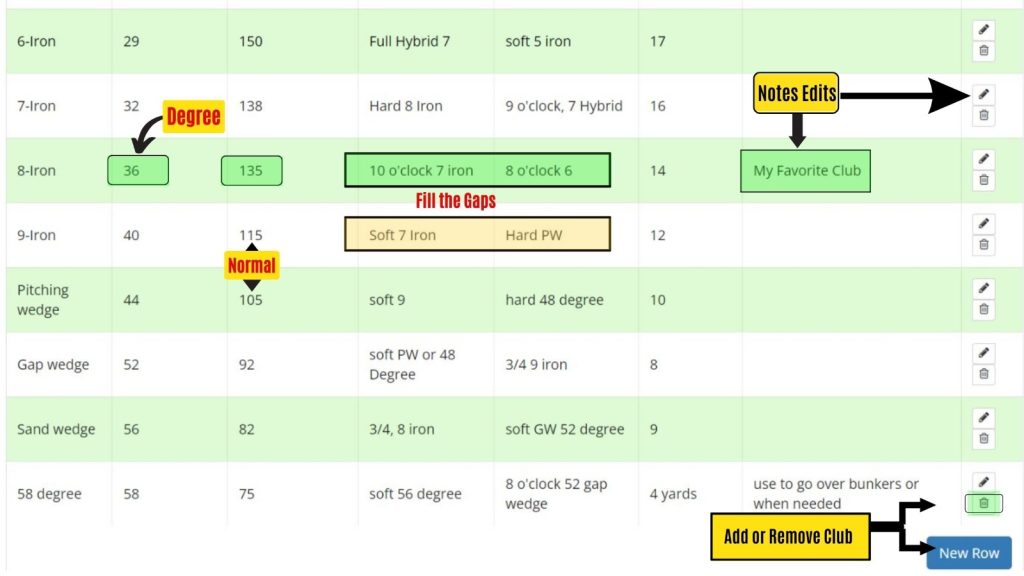
Mapping your Home course
Sounds simple, but is completely effective. (This may also be known as hitting toward your favorite club). The following are member edits for, 9 holes par 36. After eliminating 18 shots for 2 putts, this leaves us 18 more shots to scratch golf.
The analysis below shows 18 shots remaining, 2 are with Driver, leaving 16 more shots, 7 of those will be 3Wood or 3 or 4 Hybrid, which leaves us 9 shots that are Sand Wedge, Pitching wedge, 8 iron, or 7 iron.
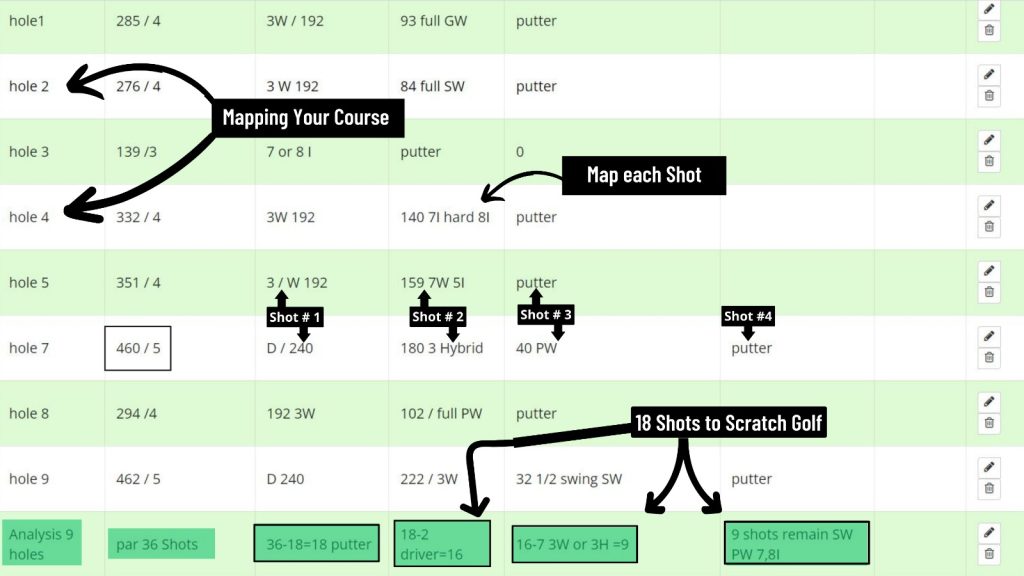
Accuracy Card, with Holder, attaches to bag for club reference and game confidence.

